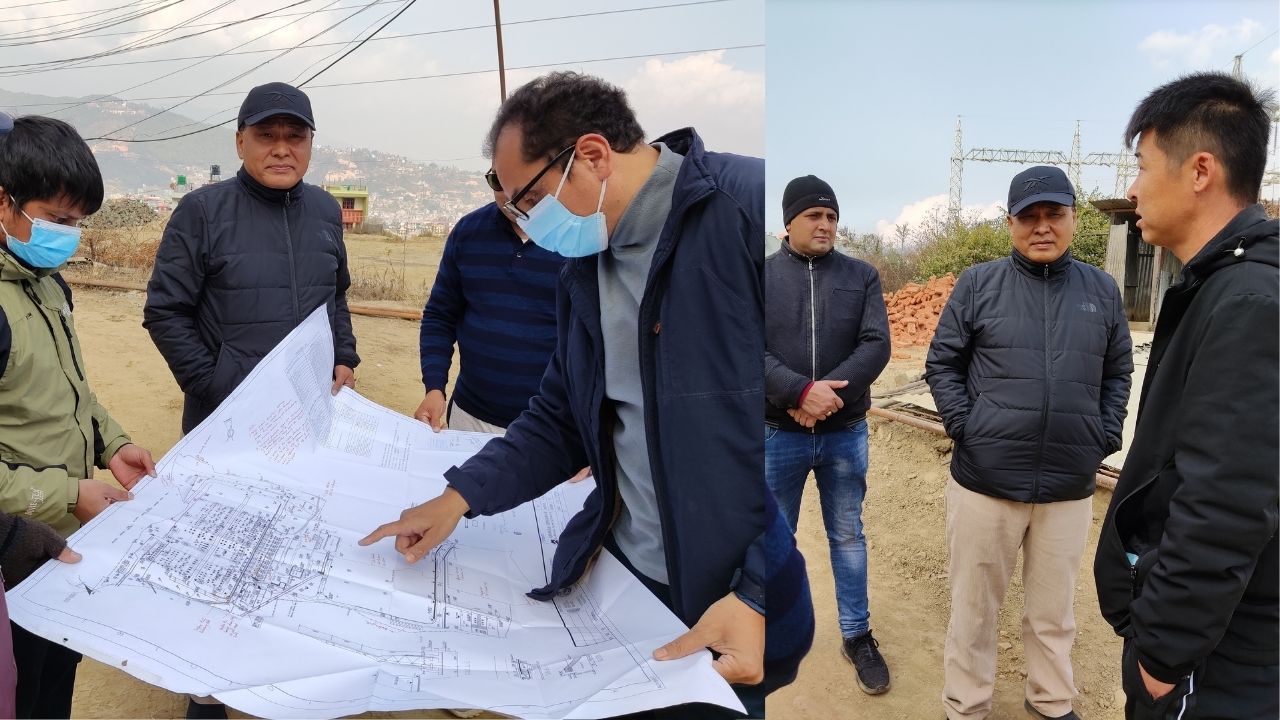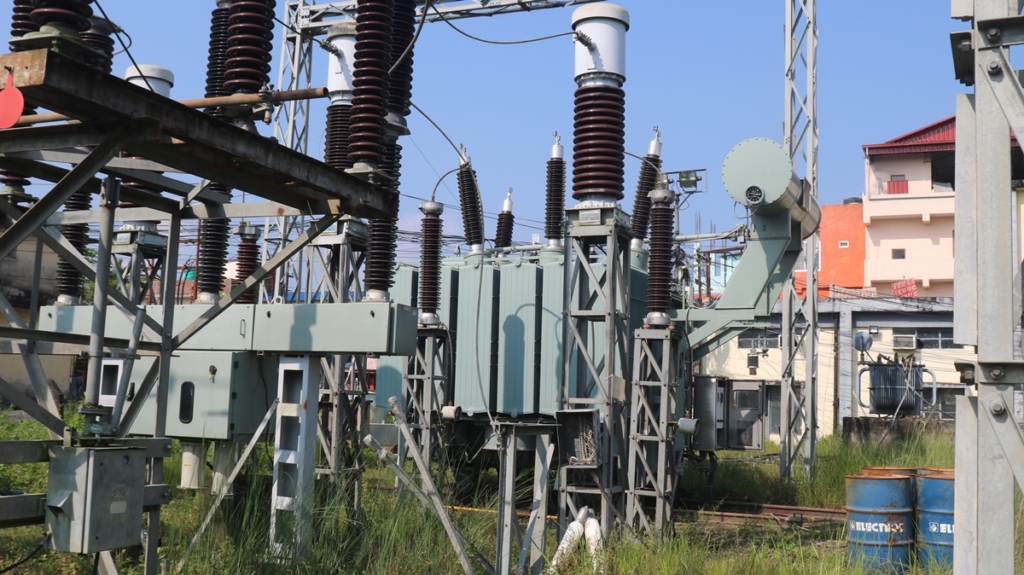Energy Update
Government tells electricity authority to work on tariff waiver scheme
.jpg)
The Ministry of Energy has ordered the Nepal Electricity Authority to make necessary arrangements for providing electricity free of cost to households that consume less than 20 units a month.
The government move comes in less than a week after Energy Minister Pampha Bhusal told journalists that the government was planning to provide free electricity to the people below the poverty line.

Currently, the government has been providing free electricity to the people whose monthly power consumption is up to 10 units in line with the budgetary provision of the fiscal year 2020-21. Their number is around 1.3 million, according to the authority.
“The Energy Ministry has proposed a tariff waiver for consumers who use up to 20 units a month,” said Hitendra Dev Shakya, managing director of the authority. “Once implemented, around 2.1 million consumers will benefit from the scheme.”

It means, around 42 percent of the authority’s customers will not be required to pay any tariff. As of mid-April, the power utility body has over five million customers.
Such a waiver will, however, put an additional financial burden on the authority whose profit for the fiscal year 2020-21 is expected to deplete sharply. According to Shakya, the new tariff waiver is estimated to cost the power utility around Rs680 million a year.
The government’s proposal has come at a time when the authority is set to lose around Rs4 billion due to various concessions given to individuals and businesses hit by the pandemic.
Besides waiving tariffs for small consumers, the budget for the last fiscal year had also announced that households consuming up to 150 units per month would be provided a 25 percent discount on monthly tariff. Likewise, those consuming up to 250 units per month would enjoy a discount of 15 percent.
The government had also announced rebates on electricity demand charges and discounts on electricity usage by water and irrigation users committees. Likewise, arrangements were made to provide discounts on the electricity demand charges for the lockdown period to the manufacturing firms affected by Covid-19 and provide a 50 percent rebate on the consumption of electricity during the low demand hours.
According to Shakya, the net profit of the authority in the fiscal year 2020-21 is expected to come down between Rs6 billion and Rs6.5 billion from over Rs11.6 billion in the fiscal year 2019-20.
Even the budget for the fiscal year 2021-22 presented by the previous government has announced a tariff waiver for people consuming up to 20 units a month, but the waiver is for the lockdown period only.
The new government’s plan to give a complete waiver on electricity tariff for those consuming up to 20 units a month has left the state power utility worried as the decision will hit its profits.
“We hope the Electricity Regulatory Commission will compensate for the loss through a cross-subsidy mechanism,” Shakya said.
However, the government said it is still not sure how the policy of tariff waiver would be implemented.
Madhu Prasad Bhetuwal, spokesperson at the Energy Ministry, said that the financial burden caused by a tariff waiver could be compensated either through the Electricity Regulatory Commission imposing a higher tariff on people consuming more electricity or through the government by directly providing compensation to the authority.
“I am not sure whether any modality has been finalised though,” he told the Post.
Officials at the authority are also not sure whether the commission would be revising the tariff structure immediately.
“I don’t think we will be immediately compensated for the loss caused by tariff waiver by increasing the tariff for big consumers,” said Shakya.
In fact, the state-owned power utility is already running in losses in tariff, according to the authority’s officials.
“We are incurring a loss of around five percent from electricity trading,” said Jayaraj Bhandari, chief of the economic analysis department at the authority. “Our profit is based on earnings from other sources such as leasing our property, interests on deposits, and bonus received from subsidiary companies.”
The authority is reporting worsening profitability at a time when it is facing mounting pressure to reduce tariffs to promote the consumption of electricity amid concerns about the potential wastage of energy after three of the six units at the 456MW Upper Tamakoshi Hydropower Project started generating electricity.
Energy Minister Bhusal added weight to the argument telling journalists last week that the government would prioritise increasing the domestic consumption of electricity by offering power at lower prices.
“I am also in favour of providing electricity to industries at cheaper prices,” she had told journalists.
The private sector has been demanding that the electricity charges be lowered to reduce their cost of production and make their products competitive in the domestic and international markets.
But officials at the authority said that it was not in a position to offer electricity at cheaper rates because it would cause further losses.
Against the claim made by the officials, Kul Man Ghising, former managing director of the authority, had told the Post last week that the average cost of purchasing power by the authority has been decreasing over the years along with the reduction in the price of electricity generated by old hydropower projects like the 60MW Khimti Hydropower Project.
According to him, the price to be paid to Khimti came down to around Rs700 million last fiscal year from around Rs5.7 billion in the previous fiscal years.
“We can make downward adjustment of prices for consumers in line with the reduced cost of power generated by hydropower plants,” Ghising had said.
Without downward price adjustment, the authority faces the risk of electricity waste as the country will technically have surplus energy, particularly during the rainy season with the addition of 456MW electricity from the Upper Tamakoshi Project. The project’s electricity generated by one turbine [76MW] was first connected to the national grid last month.
Nepal's peak demand for power was 1,400 MW, while the total installed capacity of the power projects was 1,389 MW during the first half of the current 2020-21 fiscal year, according to the authority.
Power projects with a combined capacity of over 3,000MW are currently under construction.
“We are very much concerned about the authority potentially failing to increase consumption at home and selling abroad leading to electricity spillage,” Sudhir Prasad Timilsina, managing director of United Madi Hydropower Limited. “If the authority faces financial trouble due to wastage of electricity, we will also be in trouble because there is no other agency to purchase our electricity.”
He suggested that the authority should encourage the consumption of electricity by making the electricity supply more reliable.
“If the electricity supply was reliable, I would switch to electricity for cooking from the existing Liquified Petroleum Gas,” said Timilsina. “We can boost consumption by lowering the power tariff for night time. It is good to sell electricity at cheaper prices than letting it go to waste.”
Conversation
- Info. Dept. Reg. No. : 254/073/74
- Telephone : +977-1-5321303
- Email : [email protected]













